Buying Guide for the Best Outdoor Movie Projectors
Choosing an outdoor movie projector is all about making sure you get a device that fits your environment, the kind of movies you want to watch, and how you plan to use it. Outdoor spaces can be challenging for projectors, since you have to deal with different lighting conditions, distances, and surface sizes. When shopping for a projector, understanding the main technical details will help you pick a model that will perform well in your backyard or any outdoor setting. Get clear about where you’ll be using the projector, the size of the audience, and the time of day you plan to use it most often. Thinking through these points will lead you to the features that matter most for your perfect outdoor movie night.Brightness (Lumens)Brightness, measured in lumens, tells you how much light the projector can produce. This is very important outdoors, because there's often more ambient light compared to a dark room inside. Projectors with lower brightness, typically below 2,000 lumens, are best for use only after full darkness falls and with smaller screens. Mid-range brightness, around 2,000 to 3,000 lumens, can handle some dusk or shaded evening situations and allow for bigger audiences. High-brightness projectors, above 3,000 lumens, work better in less controlled lighting conditions and with larger screens. If you plan to start your movies before it’s completely dark, or if you expect streetlights or porch lights to be around, choosing a higher-lumen model is wise. If you’re always watching at night with no nearby lights, a lower-lumen projector might be enough.
ResolutionResolution refers to how many pixels the projector can display, which affects the image sharpness and detail. The common categories are: standard definition (SD, around 800x600), high definition (HD, 1280x720 or 1920x1080), and ultra-high definition (4K, 3840x2160). Higher resolutions give you better detail, especially on large screens. If you’re mostly watching animated movies or casual gatherings, HD may be plenty. For action movies or sports, or if you want to future-proof your setup and impress your audience, 1080p or 4K projectors provide crisper images for bigger screens. Think about the source of your videos too, as streaming in HD or 4K will only look as good as your projector’s capability.
Throw Distance and Screen SizeThrow distance is how far the projector needs to be from the screen to produce a specific image size. This matters in outdoor setups where you might not have fixed walls. Some projectors are 'short-throw' and can make a big image from up close, which is useful if you don’t have much yard space. Standard projectors need to be placed further back for larger screens. Before buying, consider where you can place the projector and how large you want your movie image. If you can sit only a few feet back, look for short-throw models; if you have a large area, standard models will work.
PortabilityPortability means how easy it is to move and set up the projector. Some outdoor projectors are small and lightweight, easy to carry and set up almost anywhere, while others are larger and heavier. If you plan to take your projector to different locations — friends’ houses, parks, campsites — a lightweight model with a carrying handle or case is best. If you’ll be using it mostly in one spot, size and weight become less important. Think about your setup habits and how much moving around you’ll do.
Connectivity OptionsConnectivity refers to how you’ll hook up your video source (like laptops, streaming sticks, smartphones, or DVD players) to the projector. Common connections include HDMI, USB, and wireless options like Bluetooth or Wi-Fi. If you want flexibility to use streaming devices or connect to different gadgets, look for a variety of ports and perhaps wireless screening. If you just plan to connect one specific device, make sure the projector supports that connection method. The right choice depends on what devices you already own and how you plan to access your movies.
Built-in SpeakersBuilt-in speakers are handy for simple setups, letting you play audio directly from the projector. Outdoor conditions, though, can be tough for small speakers, so their quality and volume may not always fill a larger yard. For small gatherings, built-in speakers may be enough and mean you don’t need separate audio gear. For bigger crowds or higher-quality sound, look for a projector with audio output options so you can connect external speakers. Your choice here depends on the size of your audience and how important big, clear sound is to your movie night experience.

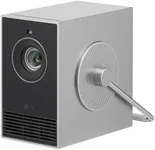
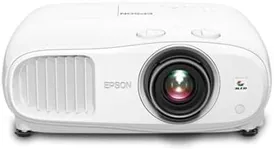


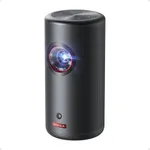
![[Sound by JBL & Built-in Battery] Y](https://images-proxy.bestreviews.guide/NzeeCSGCCMOXBFZ1A6c7Qo4f_oc=/0x150/https://m.media-amazon.com/images/I/414zF8u0G1L._AC_CX679_.jpg)

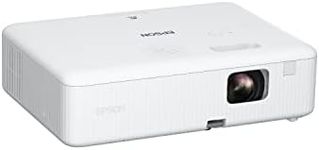

![[Electric Focus/Auto Keystone] Proj](https://images-proxy.bestreviews.guide/B3215gMtH5kHOUFDJ8mxX67AwPU=/0x150/https://m.media-amazon.com/images/I/31z62Q6CKeL._AC_CX679_.jpg)


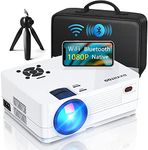

![[Netflix-Licensed/Dolby Audio]Outdoor-Projector 4K with Wifi 6 and Bluetooth,ONOAYO 800ANSI Native 1080P Portable Projector,Built-in Netflix/YouTube/PrimeVideo, Electric Focus Keystone Smart Projector](https://images-proxy.bestreviews.guide/GIOTB8x2WxFJaGriv6fpvlOx9u0=/0x150/https://m.media-amazon.com/images/I/51Ml3AEQzhL._AC_CX679_.jpg)





